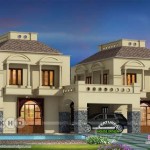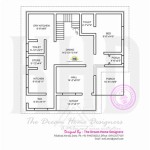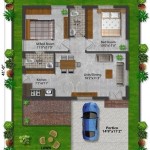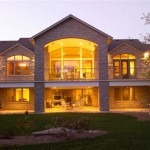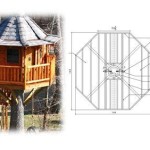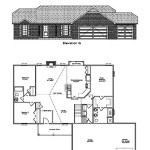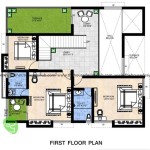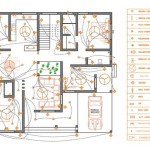```html
Home Plans With Cupolas: Architectural Elegance and Functionality
A cupola, derived from the Italian word for "small dome," is a historically significant architectural feature that can add both visual appeal and practical benefits to a home. Originally conceived as a lookout point or a belvedere atop buildings, the cupola has evolved into a decorative and functional element integrated into a variety of home designs. Home plans that incorporate cupolas often exude a sense of classic elegance, while also offering potential advantages in terms of natural light and ventilation.
The inclusion of a cupola in a home plan requires careful consideration of several factors, including the overall architectural style, the structural integrity of the roof, and the desired aesthetic effect. A well-designed cupola should complement the existing architectural features of the home, enhancing its curb appeal without appearing incongruous. Furthermore, proper construction techniques are essential to ensure the cupola is structurally sound and weather-resistant.
Enhancing Architectural Style with a Cupola
Cupolas are versatile architectural elements that can be incorporated into a wide range of architectural styles. While often associated with traditional styles such as Victorian, Colonial, and farmhouse architecture, cupolas can also be effectively integrated into more contemporary designs. The key is to select a cupola design that complements the overall aesthetic of the home.
For example, a Victorian-style home might feature an ornate cupola with intricate detailing, such as decorative moldings, finials, and stained-glass windows. In contrast, a Colonial-style home might incorporate a more simple and understated cupola with clean lines and a symmetrical design. A farmhouse-style home could benefit from a cupola constructed with rustic materials, such as reclaimed wood or copper, to evoke a sense of rural charm.
In modern and contemporary home designs, cupolas can be used as a striking architectural statement. By employing unconventional materials, such as glass or metal, and incorporating minimalist designs, a cupola can add a touch of sophistication and visual interest to a modern home.
The size and proportion of the cupola are also critical considerations. A cupola that is too large or too small relative to the size of the house can appear unbalanced and detract from the overall aesthetic appeal. It is generally recommended that the cupola be proportionate to the roofline and the overall dimensions of the home.
Optimizing Natural Light and Ventilation
Beyond their aesthetic appeal, cupolas can also serve practical functions, particularly in terms of enhancing natural light and ventilation within a home. By incorporating windows into the cupola design, natural light can be introduced into the upper levels of the home, reducing the need for artificial lighting and creating a brighter and more inviting interior space.
The positioning of the cupola is critical to maximizing its effectiveness in providing natural light. A cupola placed on the south-facing side of the roof will generally receive the most sunlight throughout the day. However, it is important to consider the potential for glare and overheating, particularly in warmer climates. Strategies such as using tinted or reflective glass, incorporating shading devices, or orienting the cupola to diffuse sunlight can help mitigate these issues.
In addition to providing natural light, cupolas can also improve ventilation within the home. By incorporating operable windows or vents into the cupola design, warm air can naturally rise and escape from the upper levels of the house, creating a cooling effect. This natural ventilation can help reduce reliance on air conditioning, particularly during the summer months.
The effectiveness of a cupola in promoting natural ventilation depends on several factors, including the size and number of operable windows or vents, the prevailing wind patterns, and the overall design of the home. In some cases, a cupola may be combined with other ventilation strategies, such as whole-house fans or strategically placed windows, to maximize its effectiveness.
Structural Considerations and Construction Techniques
The construction of a cupola requires careful attention to structural integrity and proper construction techniques. Because the cupola is typically supported by the roof structure, it is essential to ensure that the roof is capable of bearing the additional weight. A structural engineer should be consulted to assess the load-bearing capacity of the roof and to recommend any necessary reinforcements.
The materials used in the construction of the cupola should be durable and weather-resistant. Common materials include wood, metal, and composite materials. Wood cupolas can be aesthetically pleasing, but they require regular maintenance to prevent rot and decay. Metal cupolas, such as those made of copper or aluminum, are more durable and require less maintenance, but they can be more expensive.
The attachment of the cupola to the roof is a critical aspect of the construction process. The cupola should be securely fastened to the roof framing using appropriate fasteners and flashing to prevent water infiltration. The flashing should be properly installed to create a watertight seal around the base of the cupola.
The design of the cupola should also take into account the local climate and weather conditions. In areas with heavy snowfall, the cupola should be designed to shed snow effectively to prevent excessive weight accumulation. In areas with high winds, the cupola should be securely anchored to the roof to prevent damage from wind gusts.
Furthermore, the interior of the cupola should be properly insulated to prevent heat loss in the winter and heat gain in the summer. Insulation can be installed in the walls and roof of the cupola to improve its energy efficiency.
Finally, it is important to ensure that the cupola is properly maintained over time. Regular inspections should be conducted to identify any signs of damage or deterioration. Any necessary repairs should be made promptly to prevent further damage and to ensure the long-term structural integrity of the cupola.
In conclusion, home plans that incorporate cupolas offer a unique blend of architectural elegance and functional benefits. By carefully considering the architectural style, structural considerations, and construction techniques, homeowners can create a beautiful and functional space that enhances the value and appeal of their home. The addition of a cupola is not merely an aesthetic choice; it's an investment in the overall quality and character of the home, adding a touch of timeless charm and potentially improving natural light and ventilation for years to come.
```
Florida Coastal House Plan With Cupola 3 Bed 1991 Sq Ft

Florida Coastal House Plan With Cupola 3 Bed 1991 Sq Ft

Florida Coastal House Plan With Cupola 3 Bed 1991 Sq Ft

Florida Coastal House Plan With Cupola 3 Bed 1991 Sq Ft

Florida Beach House With Cupola 66333we Architectural Designs Plans

Two Story 5 Bedroom Log Home With Clipped Rooflines And Cupola On Top Floor Plan Homes House Plans

Barn Style House Plans Home Sweet

Eplans Country House Plan Captivating Cupola 2306 Square Feet And 4 Bedrooms S From Hous Style Plans

Barn Style House Plans Home Sweet

Modern Farmhouse With Cupola Lit Upstairs Loft And An Angled 2 Car Garage 444181gdn Architectural Designs House Plans

